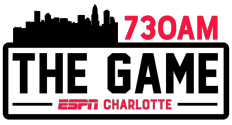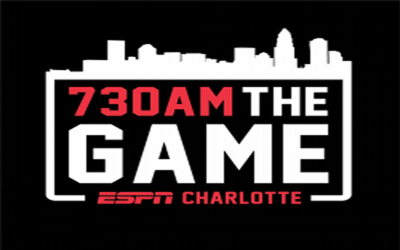Bud Harrelson, the tough, hard hat lunchpail, glove-first shortstop on the 1969 Miracle Mets, also coached at the hot corner for the 1986 World Series-winning team and later the franchises skipper, and who infamously fought with Pete Rose, aka ‘Charlie Hustle’, in one of the most craziest skirmishes in baseball history, died Wednesday in East Northport, New York. He was 79.
Harrelson had been battling some health issues since being stricken with Alzheimer’s disease in 2016 and in an assisted living facility since 2021.
Throughout his health crisis, Harrelson stayed active with his first love. He was part-owner of the Long Island Ducks, an independent minor league team located minutes from his home. He called his decades of work with the club, which he was a key component in starting and running, his greatest and proudest achievement in baseball.
Derrel McKinley “Bud” Harrelson was born on June 6, 1944, D-Day, in Niles, California, outside of Oakland and grew up in Hayward. He was called Bud, he wrote in his autobiography, because his older brother Dwane “called me Bubba because he couldn’t say brother and that evolved into Bud.” After attending San Francisco State University, Harrelson was signed by the Mets as an amateur free agent in 1963, beginning a nearly thirty-year relationship with the franchise. He debuted in the Majors in late 1965 and became the Mets’ starting shortstop in three years later in 1967.
Embed from Getty ImagesHarrelson played in the majors for 16 seasons from 1965 to 1980, the first 13 with New York. He holds the distinction of being the only Met to be part of both of the organizations World Series victories and also played on the 1973 pennant-winning team that lost to the Oakland Athletics in the Fall Classic.
In the era of slick-fielding, light-hitting shortstops, Harrelson was the classic model. A switch-hitter generously listed at 5-foot-11, 160 pounds soaking wet, he hit only seven long balls (one an inside-the-parker) with 267 RBIs for his entire career to go along with a mediocre .236 lifetime batting average.
Harrelson’s defense was his calling card. He won a Gold Glove award in 1971, finished with a career .969 fielding percentage and even now is the Mets’ all-time leader in defensive WAR at 13.7. He played an unbelievable 54 consecutive errorless games back in 1970, at that time a record for a shortstop.
“Little Buddy Harrelson,” as he was affectionately called, remains one of the most respected and revered players in Mets history. He is among New York’s career leaders in a number of categories, including fourth in games played (1,322) and plate appearances (5,083), seventh in knocks (1,029) and eighth in stolen bases (115). He was inducted into the Mets Hall of Fame in 1986. He was an NL All-Star reserve in 1970 and a starter the next year in 1971, and he earned down-ballot MVP votes both years, as well as in 1973.
Despite all of that, there is no moment in Harrelson career that people identify him with more and that he is remembered for, and it may be the most famous fight in baseball history. After the Reds were held to a pair of hits in the Game 2 shutout of the 1973 NL Championship Series, Harrelson innocently joked, or so he thought, that the powerful Big Red Machine “looked like me.” The Reds were hot.
The next day in Game 3 in the top of the fifth inning, with the Mets leading 9-2 Rose slid recklessly into Harrelson at second base on what became an inning-ending 3-6-3 double play. After Harrelson’s return throw to John Milner at first, he had a heated verbal exchange with the nearly 200-pound Rose. In a flash, the two ended up toe-to-toe and Harrelson was punched to the ground and pinned, then wrestling in the infield dirt at the old Shea Stadium, sparking a wild, bench-clearing brawl that spilled into the outfield. More haymakers were thrown, bodies were pulled and grabbed. Shockingly, nobody was injured or tossed.
When the game was set to resume, Mets fans were in an uproar, throwing objects at Rose in left field, leading manager Sparky Anderson to pull his team off the field. A contingent of Mets, manager Yogi Berra, Willie Mays, Tom Seaver and others, pleaded with the fans to stop.
“Being a little guy, I always wore a Superman T-shirt under my jersey,” Harrelson said, according to his SABR biography. “When the reporters came over after the game, I taped (an X) over the Superman logo and said, ‘It looks like Pete had a load of kryptonite today.”
While the Mets were victorious in Game 3, Rose came back the next day with a vengeance and put a hush over Shea by hitting the game-winning, series-tying home run in the 12th inning of Game 4. But the Seaver-led Mets won Game 5 to send the New Yorkers to their second World Series in five years.
For Mets fans of a certain age, actually of multiple ages, that fight remains etched in their brain, a signature moment in franchise history.
“I had fathers ask me about the fight,” Harrelson told Fox Sports in 2013. “Now their sons ask me about the fight.”
Prior to the 1978 season, a veteran Harrelson was traded to the Phillies. After two years in the ‘City of Brotherly Love’, he signed as a free agent with the Texas Rangers for one final season, completing his 16-year playing career.
It was not long before Harrelson returned to the Mets in a multitude of roles. He became the first-base coach for the 1982 season, then a SportsChannel broadcaster alongside Ralph Kiner and Tim McCarver in 1983. Harrelson managed the short-season Single-A Little Falls Mets to a New York-Penn League championship in 1984 and moved up in the ranks to skipper the Single-A Columbia Mets in 1985. Early in the 1985 season, after Mets third-base coach Bobby Valentine departed to manage the Rangers, New York manager Davey Johnson brought him up to the Majors. The next year, Harrelson was a world champion once again, the only on-field link to the 1969 title team.
After his diagnosis, Harrelson joined the board of directors of Alzheimer’s Association Long Island and worked with his family to raise awareness. Even in his diminished state, he still made it out to Ducks games, eagerly greeting fans as a goodwill ambassador even if he could not throw batting practice or coach first base anymore.
“I feel like I’m home when I’m there. I’m with the people I love,” Harrelson told the Post.
“I want people to know you can live with [Alzheimer’s] and that a lot of people have it,” he said. “It could be worse.”
Despite his condition, Harrelson was at Citi Field in 2019 for the Mets’ 50th anniversary celebration of their 1969 championship.
The team said Harrelson’s family was planning a celebration of his life for a later date.


